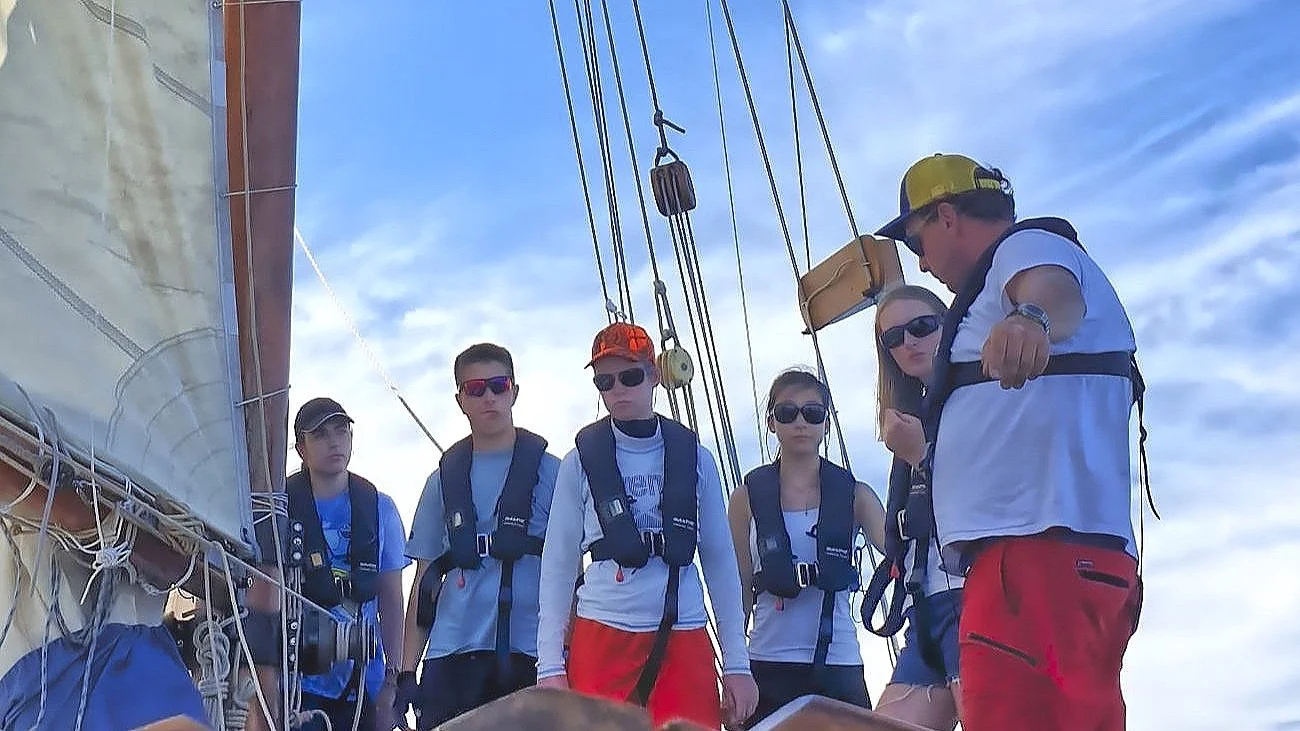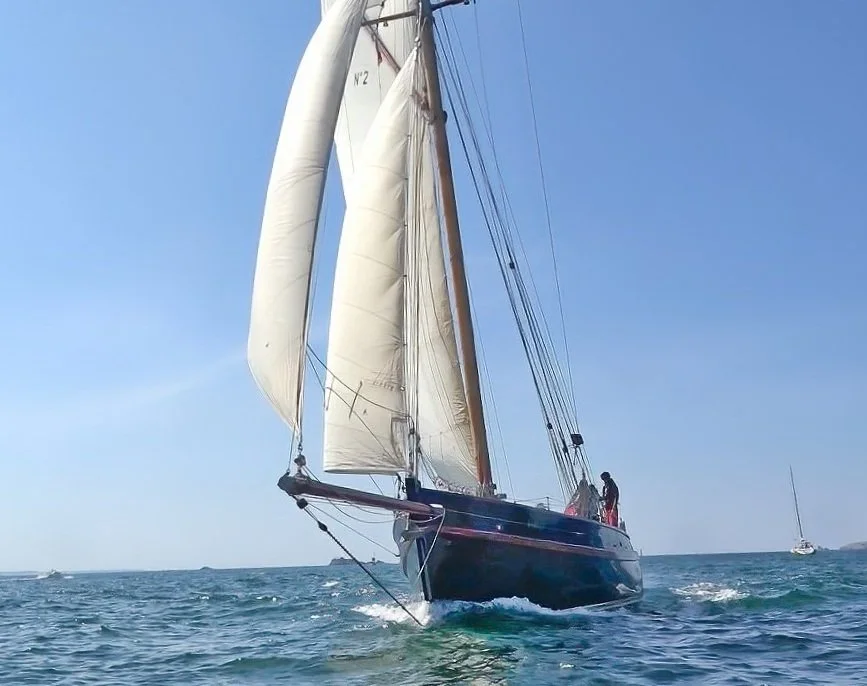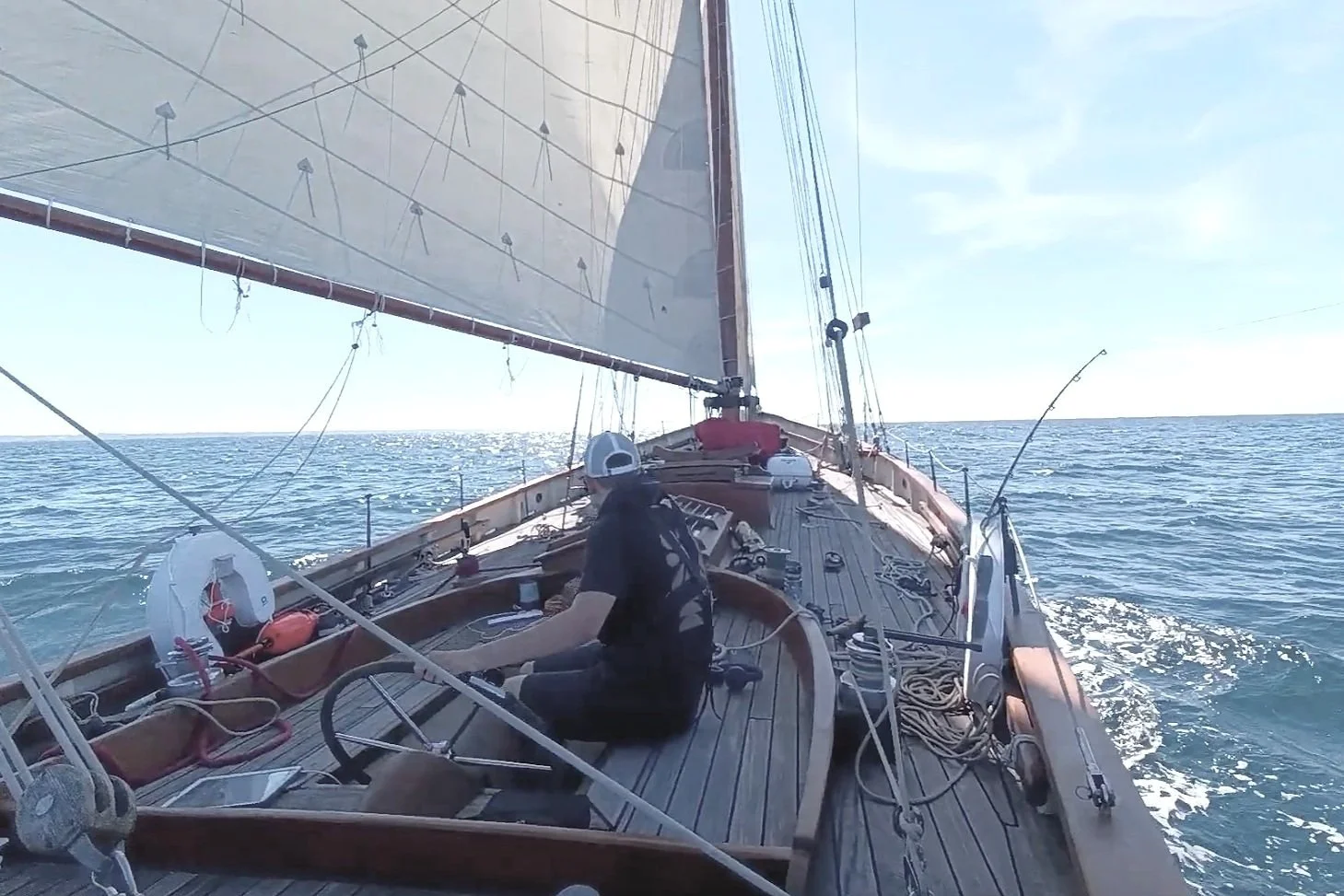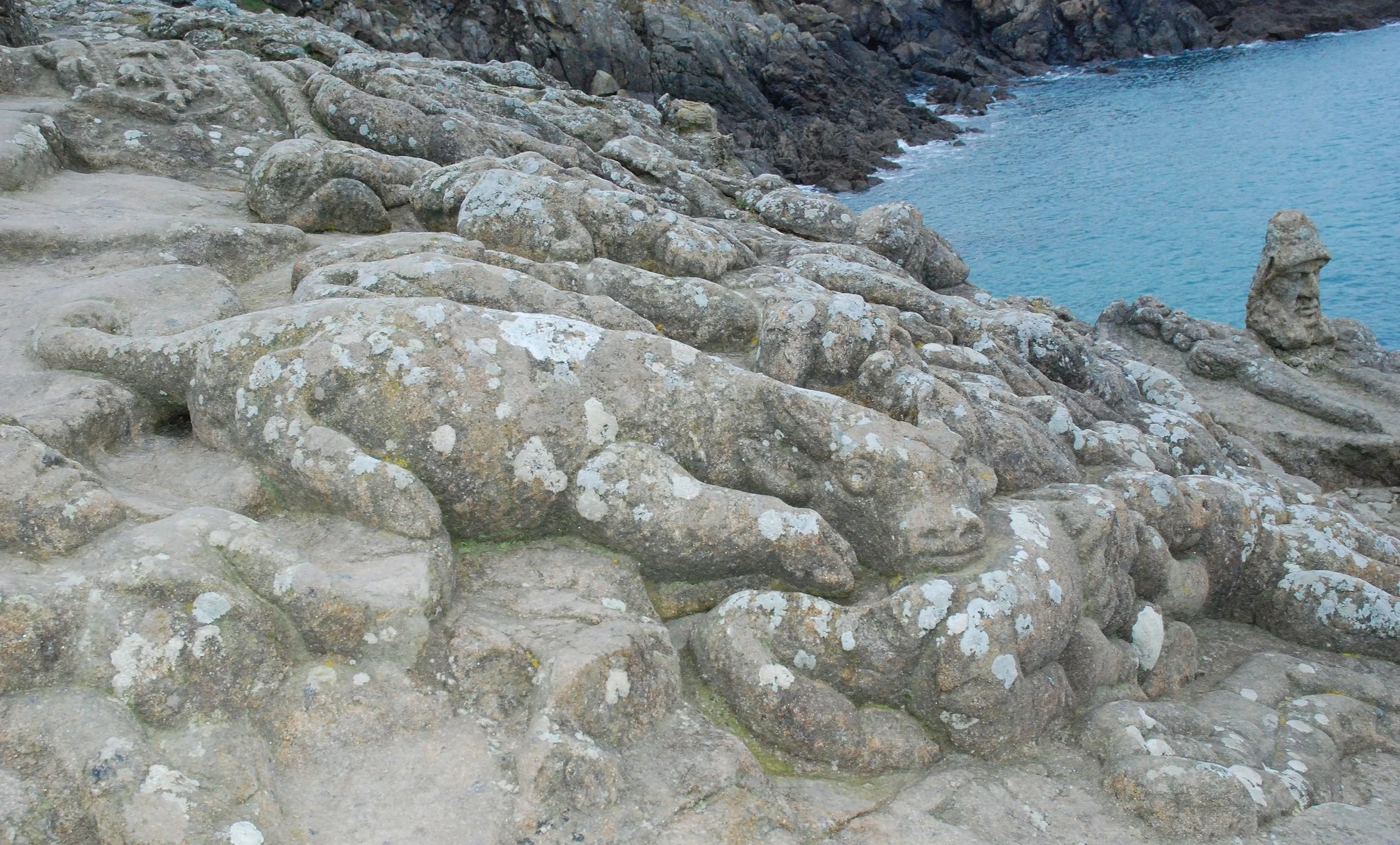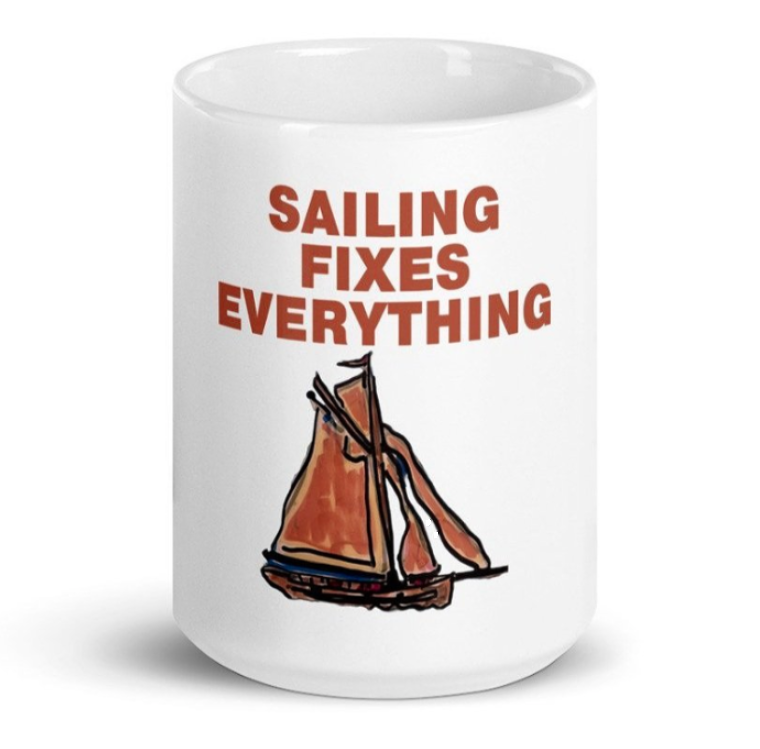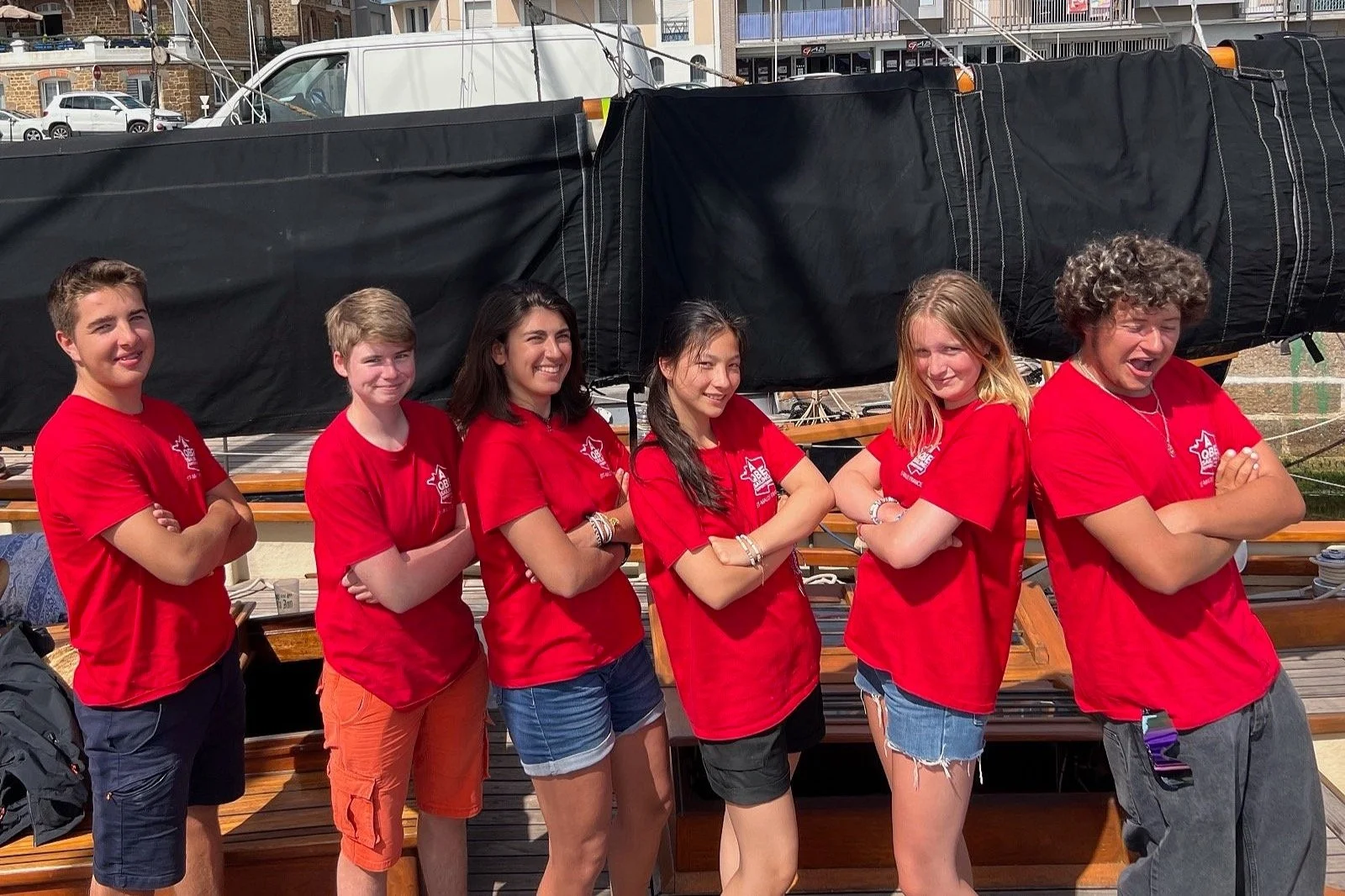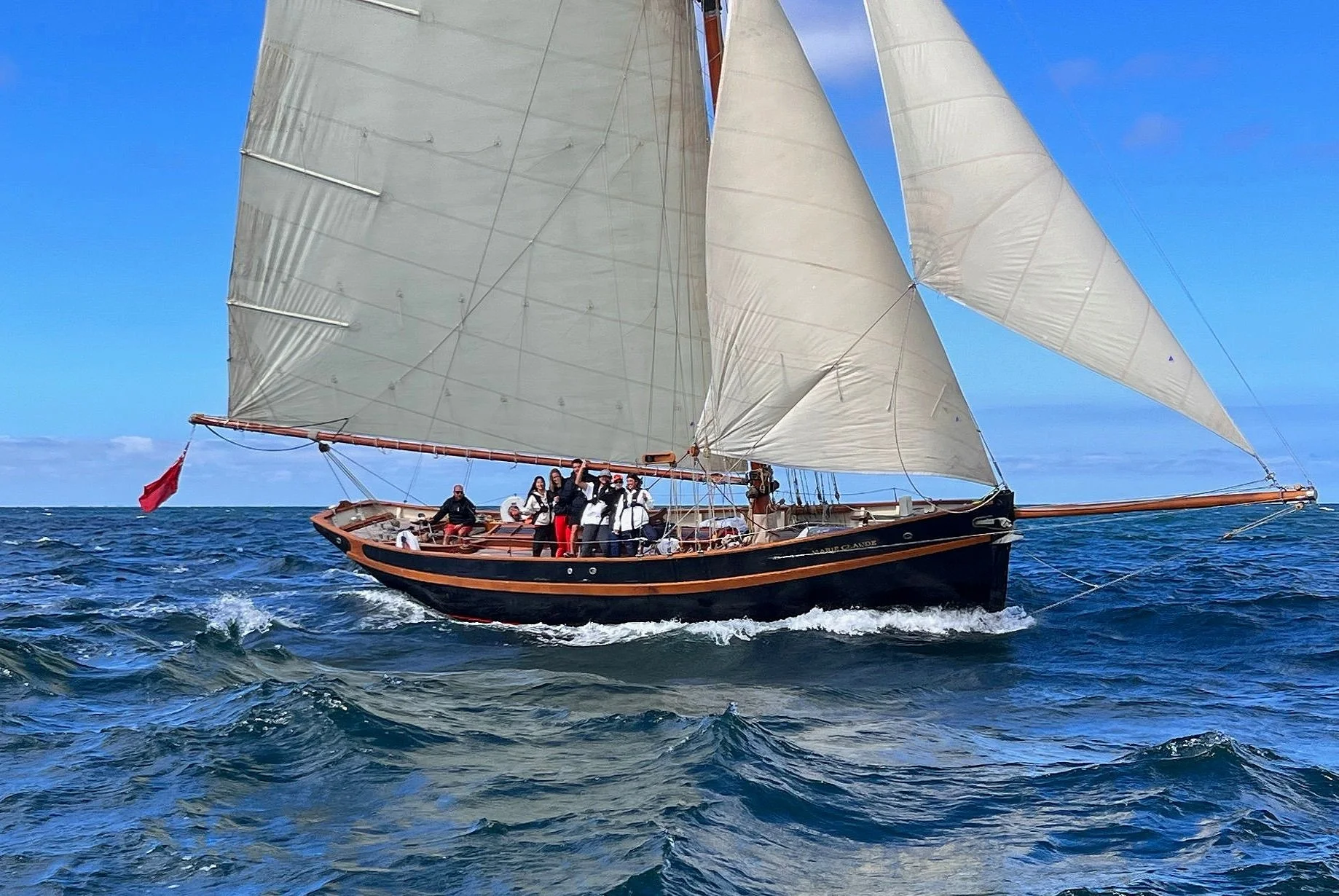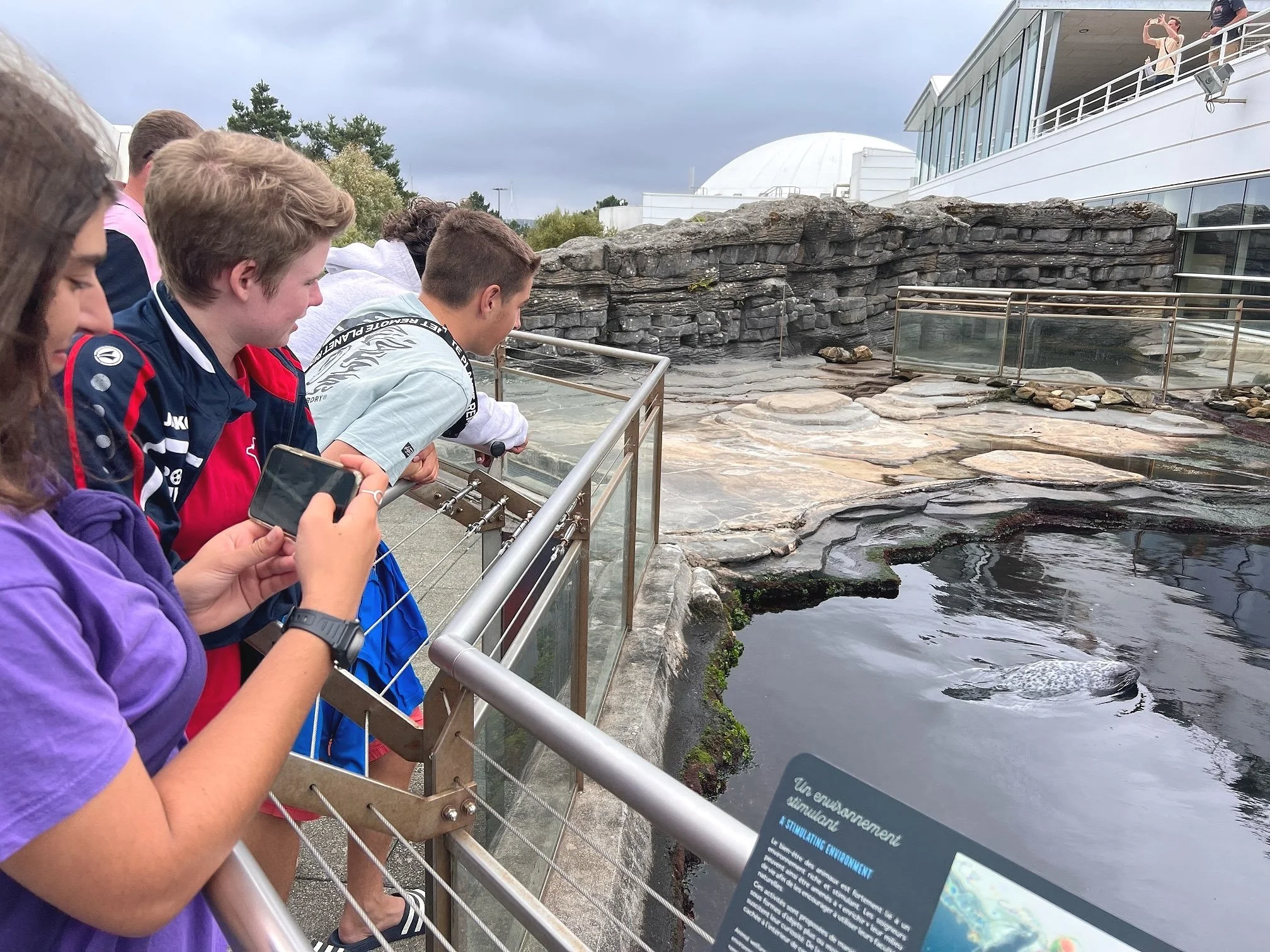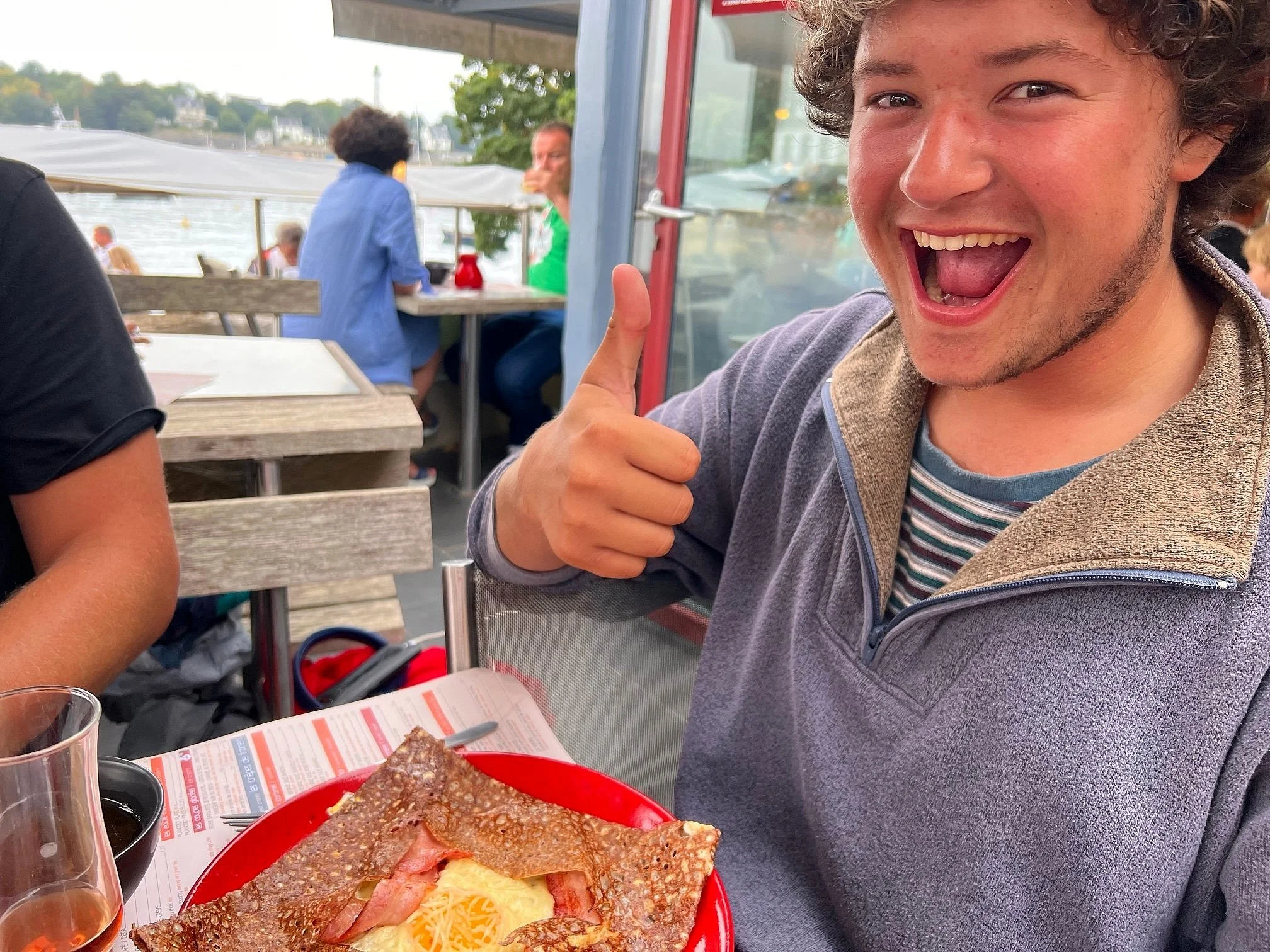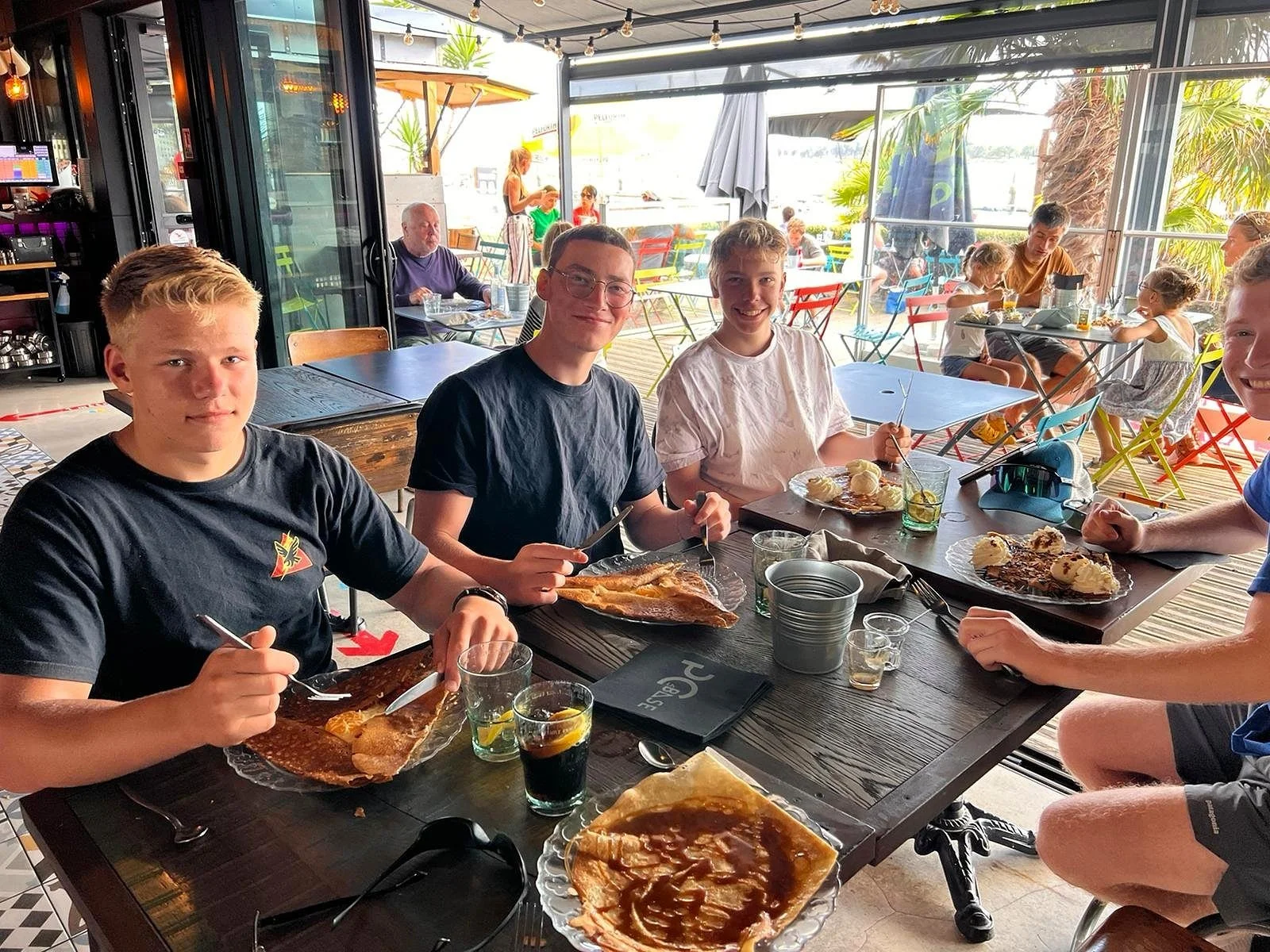Check out the article about QBE sailing expeditions in the most recent edition of The Good Life France.
The “Myth of Talent”—Kurt Vonnegut’s take:
WHEN I WAS 15 I spent a month working on an archeological dig. I was talking to one of the archeologists one day during our lunch break and he asked those kinds of “getting to know you” questions you ask young people: Do you play sports? What’s your favorite subject? And I told him, no I don’t play any sports. I do theater, I’m in choir, I play the violin and piano, I used to take art classes.
And he went WOW. That’s amazing! And I said, “Oh no, but I’m not any good at ANY of them.”
And he said something then that I will never forget and which absolutely blew my mind because no one had ever said anything like it to me before: “I don’t think being good at things is the point of doing them. I think you’ve got all these wonderful experiences with different skills, and that all teaches you things and makes you an interesting person, no matter how well you do them.”
And that honestly changed my life. Because I went from a failure, someone who hadn’t been talented enough at anything to excel, to someone who did things because I enjoyed them. I had been raised in such an achievement-oriented environment, so inundated with the myth of Talent, that I thought it was only worth doing things if you could “Win” at them.
—Kurt Vonnegut
Vonnegut, one of the most influential (and popular) American writers and novelists of the 20th century, is best known for his novels Slaughterhouse-Five (1969—film adaptation 1972), Cat’s Cradle (1963), and Breakfast of Champions (1973). His works combine science, black comedy, and satire.
Living an interesting life
In the “For-What-It’s-Worth-Department.” Excerpted from the The Week.
Seven ways to be the most interesting person in any room
Welcome to charm school
7. Live an interesting life.
Remember the theme of Don Quixote: If you want to be a knight, act like a knight. If you don't read, watch, and think about generic things, generic things are less likely to come out of your mouth. This doesn't need to be expensive or difficult. Hang out more often with the most interesting people you know. The friends you spend time with dramatically affect your behavior — whether you like it or not. The Longevity Project, which studied over 1000 people from youth to death had this to say: The groups you associate with often determine the type of person you become. In The Start-up of You, Reid Hoffman and Ben Casnocha talk about how the best way to improve particular qualities in yourself is to spend time with people who are already like that. The best and most reliable way to appear interesting is to live an interesting life [emphasis ours]. And to pursue that ends up being far more rewarding than merely making a good impression on others.
You can read the entire article here.
Cause and Effect
It’s something many parents may not have considered: the life-changing impact of internalizing the concept of cause and effect. After all, we live in a world now where technology allows us to create our own virtual realities, realities in which cause and the resulting effect can seem to be severed.
Your scribe once knew an English professor who bemoaned the ubiquity of… wait for it: central heat! Why? Because the flames—the source of the heat—were hidden from view. Warm air almost magically wafts out of a vent. Ditto for summer produce at a supermarket in January. Not only do people not know how their food is grown, but their connection to the rhythms of changing seasons become increasingly tenuous. In the professor’s mind, these disconnections and many others like them, when taken in the aggregate, can lead to psychic disorientations.
So what does that have to do with sailing? Well, maybe more than you think. We’ve had a lot of success using gaff-rig boats to teach teens how to sail the way mariners did 100 years ago. Of course, we have GPS (we’re required to) and we use it when it’s expedient. But we show our crew members how to use charts, a compass, and the stars to navigate. We teach them how to calculate tides, raise and lower sails with elbow grease, and contend with whatever nature throws at them. They quickly become keenly aware of the presence of an awesome natural universe around and above them. Using ancient skills, they discover how to make port even when circumstances make it difficult to ascertain exactly where they are or where their intended destination is. Talk about a life lesson!
Suffice it to say, if warm air from a vent and strawberries in November can be somewhat “disorienting,” old-school sailing can be remarkably grounding, not to mention extremely rewarding.
Some people think that all youth sailing program(me)s are much the same. They’re not. When you throw in all the onshore experiences our sailing area affords—the museums, the remarkable historical sites, the cultural events, the culinary revelations, the exploration and nature walks—you’ll see why QBE is in a class by itself.
One of the great benefits of sailing
At sea, you get the opportunity to rediscover your maternal language—SILENCE
ho ho ho
Wind in our wings: Helping our crew members to soar
“They will soar on wings like eagles; they will run and not grow weary, they will walk and not be faint.””
Repost: Wings of Inspiration by Polish photographer Dariusz Klimczak. www.kwadrart.com (not our boats)
QBE expeditions are about learning to sail. They’re about exploring postcard ports and coastlines. They’re about discovering new cultures with all their historic wonders, artisanal treasures, and distinctive cuisine. But—though hard to articulate—they’re also about the nourishment that small-group traditional sailing provides for the soul and the confidence that flows from it. It’s one of those things you just have to experience to truly appreciate.
The Sculpted Rocks of Rothéneuf
The sculpted rocks of Rothéneuf, located between Saint-Malo and Cancale, are some of the better-known and most surprising art brut sculptures in France. They were created between 1894 and 1907 by Father Adolphe Julien Fouéré, known locally as Father Fouré (1839–1910).
Father Fouré served as the rector of parishes in Paimpont, Guipry, Forges-la-Forêt, Maxent, and finally at Langouët where, in 1894, he was forced to step down despite a petition from his parishioners requesting he be allowed to remain. He subsequently retired to Rothéneuf, a short distance from Saint-Malo, where he served as a simple parish priest and began work on a monumental sculpture that he carved directly into the coast’s granite rock. His sculpted figures were originally polychrome and ranged from bas-relief to totally exposed faces. For over thirteen years, from the end of 1894 to 1907, he also sculpted more than 300 statues, including a number of wooden figures. His home/atelier became known variously as ”Haute Folie,” ”Hermitage de Rothéneuf,” and ”House of the Hermit.” It soon became known simply as the ”The Wood Museum.” In 1907, suffering from paralysis and speech difficulties, Father Fouré was forced to abandon his work. Old photographs show him resting in his armchair inside the house where he died on February 10, 1910. He is buried in the cemetery at Rothéneuf.
Sailing fixes everything
…well, maybe not EVERYTHING, but small-group team sailing can fix a lot. When it comes to boosting emotional intelligence, it’s hard to find a more effective personal-development platform. Plus, when you mix in all the culture-forward activities ashore, QBE crew members return home as much more interesting, academically motivated youngsters.
August 2022 Expedition Update—Our Indomitable Crew
Our August 2022 crew. Thanks for the memories. Maybe we’ll see a couple of you next year?
August 2022 Expedition Update—Headed Home
This is what it’s all about: three weeks of great adventure, dozens of wonderful memories, great new friends, and not a marauding orca pod in sight (see below). Hey, we’re going to do it again next July and August. Come join us!
August 2022 Expedition Update—Deep-Sea Fishing
We just Googled it: the cost of deep-sea fishing out of Miami can run as much $225 per hour. And there are minimums, generally four hours. So that’s what? US$900/900€/£760 for half a day. Holy mackerel! Well, we let our crew members try their luck at no additional cost. And take a look: yesterday, Bay, one of our August students, reeled in two “holy mackerel(s).” We don’t know if his parents would be impressed, but Bay was lovin’ it! Maybe we should add fishing to our list of QBE expedition perks...
August 2022 Expedition Update—Océanopolis
We’re back in Brest this week—at Océanopolis. For more on this amazing aquarium and marine research facility, check out their summer 2022 trailer, HERE. It’s in French, but if you don’t speak the language, you’ll still get the gist. Our July crew spent a day at Océanopolis, as well. It’s an impressive, if below-the-radar, destination.
August 2022 Expedition Update—Headed to Brest
Just after this pic was taken, the weather changed. After a great day in Lorient, we had to abandon plans to visit the Glénan Islands and decided to sail west instead. On the upside, we found a great crêperie to celebrate a birthday. Now it’s on to Brest!
August 2022 Expedition Update—The Lorient Inter-Celtic Festival
Here we are today at the Inter-Celtic Festival in Lorient with Charles Bertrand, a former QBE crew member who now plays with the National Marine Corps Breton Bagpipe Band. When he was a teenager, Charles brought his bagpipes along on an expedition and routinely piped us into port. It always created a stir when people jockeyed for a good vantage point from which to watch and listen.
There are several Celtic “Nations,” including Ireland, Scotland, the Isle of Man, Wales, Cornwall, Brittany, Galicia (in Spain), and Asturias (also in Spain). All share indigenous cultures that descended from an ancient proto-Celtic progenitor, all are represented at the festival, and all have a thing about bagpipes!
You never know what you’ll discover on a QBE sailing expedition.
August 2022 Expedition Update—the QBE potato peeling Society
We like to write about the things that make QBE sailing expeditions a bit... different. We use this space to showcase some of the amazing places we visit, some of the special events we attend, and some of the summer fun we have (e.g., swimming and exploring). But here’s one example of something that undoubtedly sets us apart: our August crew members all wanted to help peel their own potatoes this past week (seriously)—a team peeling exercise! And a fine job they did. Team building and bonding are points of emphasis on QBE expeditions.
QBE July 2022 Expedition—Our Crew
Congratulations guys! The pleasure was all ours. We’re sorry that a few people were unable to join us.
Dolphins alongside a QBE cutter off the Breton coast
It’s not uncommon for us (and other sailors) to be escorted by pods of dolphins. People who study marine life seem to have differing opinions why they do this. Some speculate they’re able to expend less energy by slipstreaming—i.e., they’re wanting to hitch a free ride. Others opine that dolphins are very curious animals: they simply want to check out any large floating projectile not found in nature, see who’s on it and what they’re doing. Whatever the reason, a dolphin escort is always a source of tremendous excitement for the crew. We’re advised not to feed dolphins day-old pizza or… well, anything at all. In fact, it’s illegal.
A dolphin pod escorting a QBE sailing expedition (July 2022)
QBE July 2022 Expedition Update—We made it to Pornichet!
Everybody had a terrific time exploring the entire length of the Breton coast, learning a lot about gaff-rig sailing, and making great new friends. (Crew members also got their QBE t-shirts! LOL) More pics of the expedition later.
Now we spend a few days participating in a classic-boat regatta before welcoming our August crew and heading back to St-Malo.
QBE July 2022 Expedition update—Lorient, France
When in France, one should eat what the French eat—with perhaps some extra whipped cream. Here we are in Lorient today, chowing down on crêpes.
